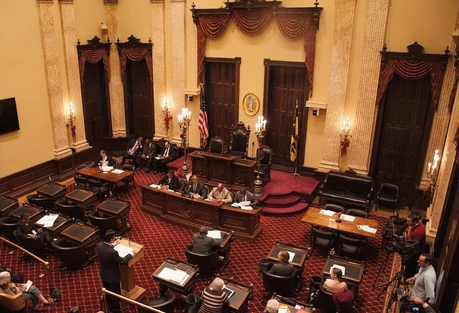Propositions A and B – A New Transportation Era for Austin?
- Propositions A and B are new transportation proposals on the November 3rd ballot in Austin.
- If passed, they will provide needed infrastructure improvements to Central Texas.
- While passing the propositions will raise our taxes, the cost is worth it for the necessary improvements.
I’m sure I don’t have to tell anyone that we are getting close to election day. Between non-stop news coverage, constant commercials, and endless email solicitations, its pretty difficult to avoid election coverage.
I am not here to weigh in on the Presidential or Senate or City Council elections. If you’d like my opinion on that, call me up and we can go grab a beer and talk about it. But there is one election issue I want to address because its very important for the future of Austin.
Propositions A and B on the ballot in Austin are important for the future health of Central Texas. In this blog, I will talk about what they both are, why they are important, and why I am voting for them.
To be clear up front, I do have some clients who will likely benefit from Propositions A and B passing. But that is not why I am writing this blog entry. I have not been paid to advocate any position. I am writing this because I think passing the propositions is important to Austin’s future.
Proposition A
First, lets start with Proposition A. Prop A includes the following:
— New train routes –
Orange Line – The goal of this line is to connect north and south Austin. The initial investment will be from North Lamar and US 183 to Stassney Lane.
Blue Line – This line will offer service to the Austin airport, with service from North Lamar and U.S. 183 to downtown and ABIA.
Green Line – This is a new commuter rail service offering service from downtown to East Austin’s Colony Park.
— Transit Tunnel Downtown – Light rail is proposed to travel underground downtown. The City expects operating rail service beneath the streets to increase the system’s travel time reliability and to be safer than operating at street level.
— New Rapid Bus Routes –
The Gold Line (from the Austin Community College (ACC) Highland Campus to South Congress and Ben White Boulevard) – This will be a MetroRapid service that could eventually be converted to light rail as a part of the Project Connect System Plan.
Expo Center – from East Austin to the University of Texas and downtown.
Pleasant Valley – from Mueller to the Goodnight Ranch Park & Ride.
Burnet – from The Domain to Menchaca and Oak Hill.
— New Facilities – The plan includes as many as nine new Park & Ride facilities at Four Points, Loop 360, ACC Highland, Delco Center, Expo Center, Wildflower Center, Goodnight, McKinney Falls, MetroCenter, and a new transit center at the Eastside Bus Plaza.
— New Circulators – The plan proposes 15 new neighborhood circulators, on-demand pickup and drop-off to locations within zones. Circulators provide first-mile/last-mile service and connections to transit stations and other destinations.
— Anti-Displacement Funds – The plan includes $300 million for transit-supportive anti-displacement housing strategies.
Funding for Proposition A
According to city officials, Proposition A is expected to cost about $7.1 billion. Federal funding will cover approximately 45 percent of the project’s estimated cost. The rest of the cost – including the operations and maintenance of the system – will be paid by Austin residents. This will be raised through an increase in the city’s property taxes of 8.75 cents per $100 of property value.
Proposition B
Proposition B includes the following:
New Sidewalks – Approximately $50 million is earmarked for new sidewalks and $30 million for rehab of existing sidewalks
Urban Trails
Bikeways
Safety/Vision Zero – This includes projects that reduce conflict and increase safety, including:
— Intersection reconstruction projects at an estimated 25 major intersections.
— Speed mitigation projects on approximately 70 street segments.
— System-wide pedestrian crossing projects.
— A variety of rapid response projects on the High-Injury Network
Safe routes to school
Local transit enhancement program
Neighborhood partnering program
Improvements for publicly owned roadways
Major capital improvements
Cost of Proposition B
The cost of Proposition B, if approved, will be paid for through the issuance of $460 million in tax supported general obligations funds.
The Need for Better Transportation Systems
Anyone who has been in Austin the last few years knows the need for transportation upgrades. In 2019, Austin was the fastest growing large city in the United States. The metro area population grew almost 3% from mid-2018 to mid-2019. This is great for the area – more businesses and more people are flocking to Central Texas.
But our infrastructure has not kept up with that growth. There are too few ways to get around town and the predictable result is terrible traffic that makes all of us miserable. These effects are magnified when combined with our affordable housing problem. With a lack of affordable housing near the city center, many folks are forced to live some distance away. And then they must commute into town for work. By not keeping up with the transportation demand, We’ve made those commutes much worse than they need to be. Not only is this a drain on the commuters, its very harmful to the environment. Improved public transportation, therefore, should help alleviate traffic issues, make commuting more bearable and affordable, and have a positive impact on the environment.
Finally, as I mentioned above, I have clients who may be helped if Propositions A and B pass. That’s because additional transportation hubs are good for commercial property owners and developers. Transportation hubs become hot spots for development and help make it easier for people to live and work in new areas that can be developed.
Of course there is a cost to these transportation improvements. But we need to invest in our Central Texas infrastructure. This is, therefore, a cost that we should be willing to make because it will improve the lives of all Central Texas residents.
As a result, I will be voting for Propositions A and B. And I hope you will join me.
Propositions A and B – A New Transportation Era for Austin? Read More »



